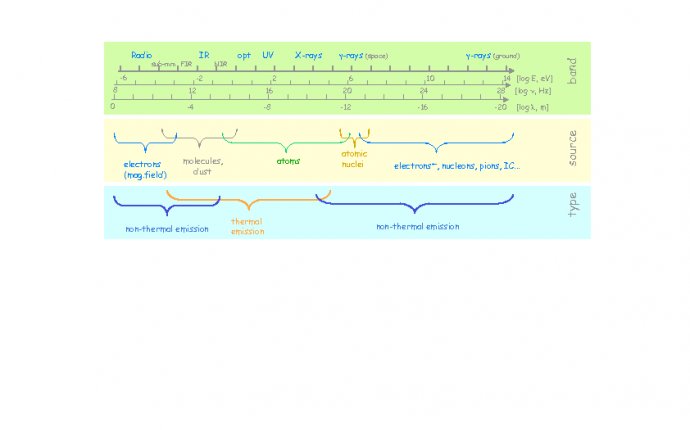
Astrophysics lessons
It is not a secret that science is regarded as the most difficult subject by American students, whose knowledge of science, unfortunately, does not meet international standards in most cases. This dangerous situation has not changed much in the last couple of decades, even though many different educational plans and projects have been proposed. The objective of these plans and projects is to change the existing situation of science illiteracy in American schools.
Unfortunately, none of the changes in curricula and in the philosophy of science education seem to have produced a lasting solution to this difficult problem. American students still appear to be almost at the bottom of scientific competency, according to the results of science exams given to students in different countries. One of the reasons is that the improvement of the content and methods of science instruction is a complex and continuous process.
We should acknowledge that, of all science courses, physics and astronomy are in the worst shape. Only a small number of American high school graduates choose these courses (20% for physics, and less than 2% for astronomy) from among other electives. Most of the students do not recognize and cannot explain simple natural phenomena. "Radiation, " "galaxy, " "spectrum, " "nebula, " and other magical words mean nothing to an average student.
In trying to help resolve this dangerous situation, UC Berkeley's Center for Extreme Ultraviolet Astrophysics, in collaboration with San Francisco State University, offered a new satellite operations class for school teachers. The main goal was to provide teachers with detailed information about NASA's Extreme Ultraviolet Explorer project.
I was one of the teachers who participated in this class. Frankly, I was very surprised to see how teachers, even those who were not teaching science, were excited about this program, were happy to learn new information, and had so many ideas about how to use it in their classes.
The outcome of this hard work (two days a week, after school, commuting to another city in heavy traffic) was the development of lesson plans containing elements of modern astrophysics that might be used in different courses: science, math, and even elementary school classes.
My personal goal was to find new and effective techniques of introducing the information about the EUVE NASA mission into the curricula of classes I am teaching this year (conceptual and AP physics).
As a result of this class, I have developed a unit "Electromagnetic Spectrum on Trial" that can be taught within different courses: physics, chemistry, physical science, earth science, and astronomy. The idea is to instill in our students interest in real science by exposing them to some the issues of modern astrophysics.
But the best idea would be the creation of an independent high school subject devoted completely to fascinating astrophysics concepts. This will allow a teacher to spend enough time on the logical introduction of the exciting learning material and on the development of important learning skills. At the same time, such a course will help students quench their curiosity and will challenge them to learn more about science and its vital importance in our increasingly technological society.
Course Description:
- COURSE TITLE: Astrophysics
- DEPARTMENT: Science
- GRADE LEVEL: 10th - 12th
- DURATION: One semester
- PREREQUISITES: Algebra, Geometry (Math); Physical/Earth Science or Conceptual Physics (Science)
- COURSE GOALS:
- To introduce several basic concepts of modern astrophysics, such as:
Stellar classification and spectroscopy; solar system and planetary motion; stellar evolution and nuclear fusion; messages from the cosmos, and tools used to collect them; low-energy and high-energy objects in our universe and electromagnetic radiation; etc.
- To demonstrate how physics laws are used to reveal mysteries of the universe
- To utilize a nontraditional approach to teaching science at school by organizing students' library research, group work, project presentations, poster contests, science conferences, etc.
- To develop computer skills through the use of Internet-based resources
- To identify historical perspectives in solving astrophysical problems
- To discuss the role of scientists in modern science and the place of the humankind in the Universe
- To introduce several basic concepts of modern astrophysics, such as:
- COURSE SUMMARY:
This one-semester course is centered around four main blocks, or units: "History of Exploring the Universe, " "Electromagnetic Radiation on Trial, " "Stellar Astrophysics: Classification, Structure, and Evolution of Stars, " and "The Role of Multi-wavelength Astrophysics in Solving the Mysteries of the Universe."
The course will provide opportunities for students to investigate topics of interest, to conduct experiments, to develop critical thinking and communication skills, and to get a feeling of being not only a student, but a scientist and teacher at the same time.
The difference between the existing course of school astronomy and this new astrophysics course is the emphasis on physics concepts, laws, and theories that allow students to understand better the nature of astronomical phenomena.
Newton's law of universal gravitation, Kepler's laws of planetary motion, Doppler effect, Rutherford-Bohr's model of the atom, Kirchoff's rules of spectral analysis, Maxwell's theory of electromagnetic waves, Planck's formula of a photon energy, blackbody radiation theory, nuclear fission and fusion, Einstein's theory of relativity, and inverse-square law for light luminosity are among topics for class discussions in the course.











